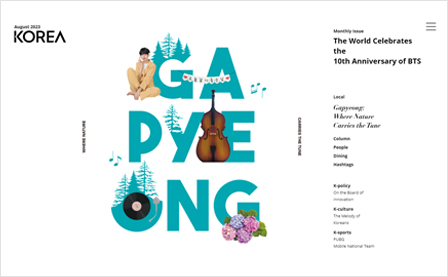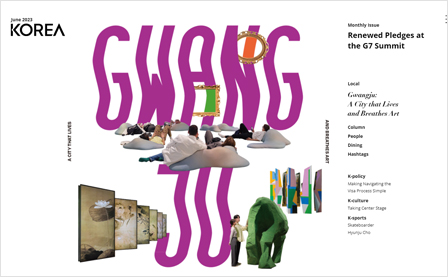September 2023

Local
Dining
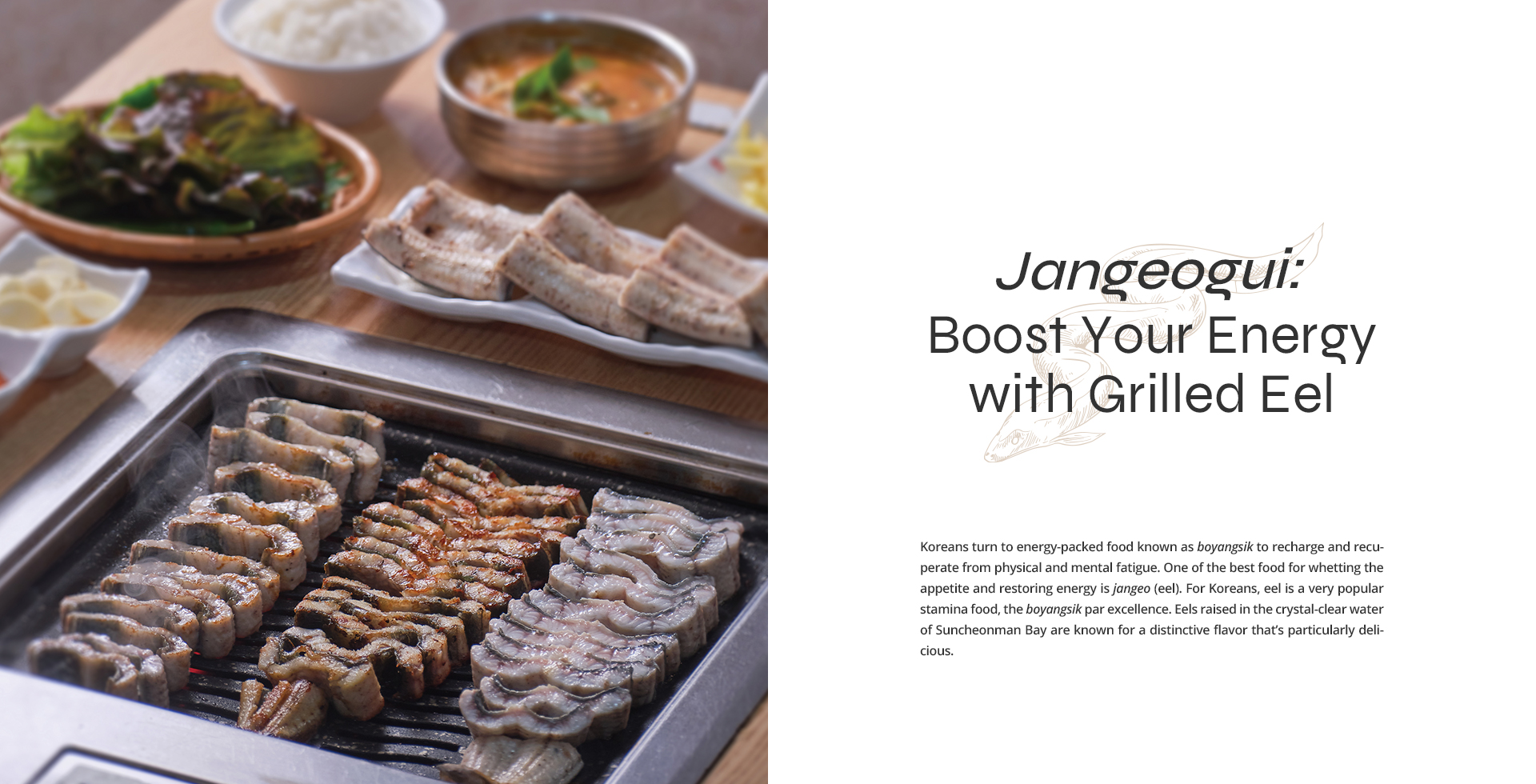
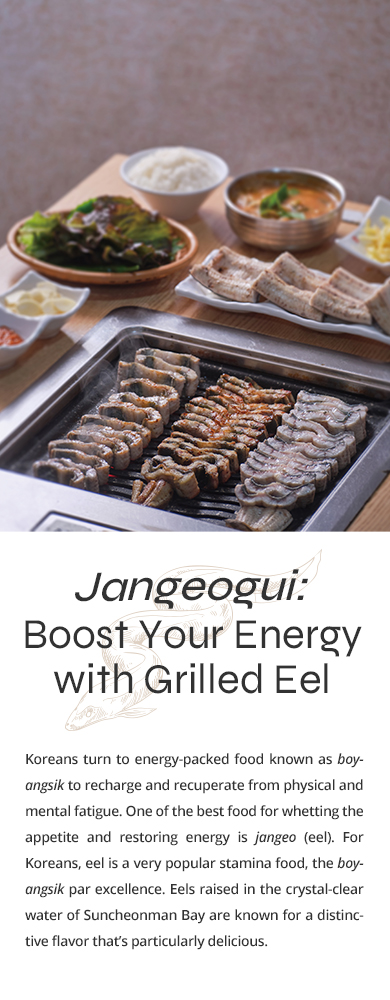
Freshwater Eels Raised in Pristine Conditions
Eels possess tremendous physical stamina―they can swim for thousands of kilometers without eating a thing. For that reason, the slippery animals have come to be regarded as icons of strength. In Korea, they’re a well-known stamina food that has been in high demand for untold eons. Eels taste the best in the late summer and early fall, when they’re heading downriver to the sea to spawn.
Eels are a rich source of vitamins A, B and C, and eating them has numerous benefits for repairing and beautifying the skin and fending off the aging process. Eel is widely seen as highly nutritious, containing 300 to 1,300 times more vitamin A than beef.
Eels are generally divided into freshwater and saltwater varieties. The ones you’ll find in Suncheon are freshwater eels, which are meatier and more flavorful than saltwater eels. The eels’ tender, juicy flesh keeps bringing hungry customers back to the bay.
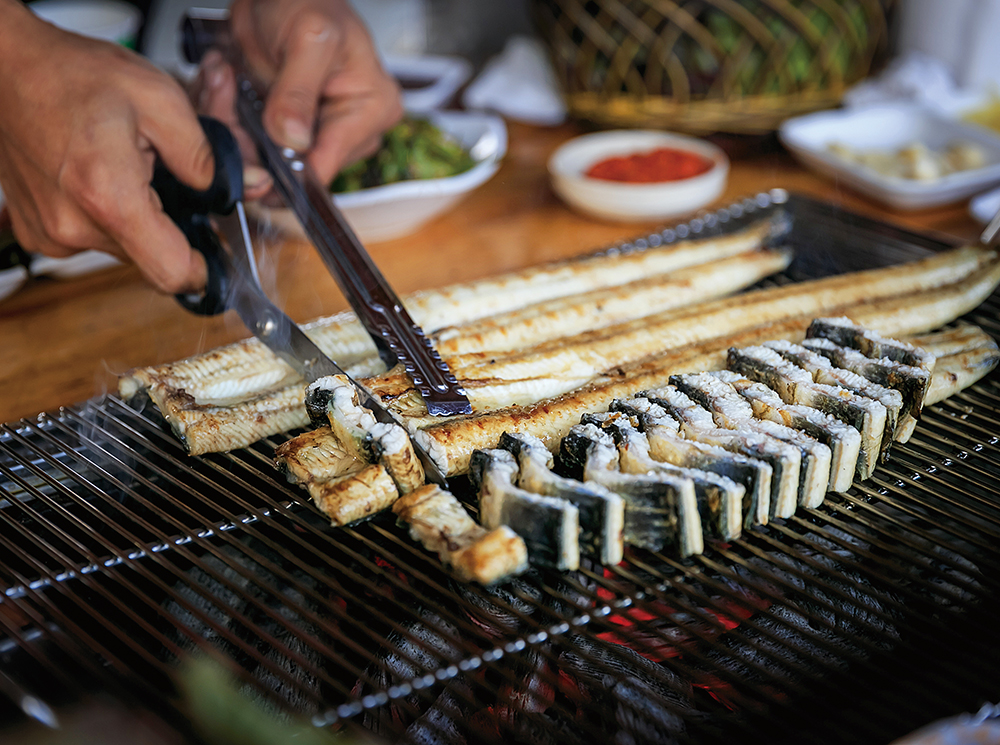
Jangeogui is typically prepared by being grilled lightly in the restaurant’s kitchen and then finely chopped and grilled again on the guest’s table.
Boosting Energy with Jangeogui
Grilling is the best way to appreciate eel’s true value. Jangeogui (grilled eel) is largely divided into two types. One is sogeumjangeogui, in which eel is cleaned and salted. The other is yangnyeomjangeogui, in which eel is slathered in a sauce based on red pepper paste. If you’re not sure which you’d prefer, we recommend starting with the salt preparation and then moving on to the heavier red sauce. At most eel restaurants, living eels are pulled from a tank and prepared on the spot: it doesn’t get any fresher than that! The freshly prepared eels are as thick as a child’s forearm, thick with meaty flesh.
The neatly trimmed eel is placed on the grill and flipped from side to side until it reaches that appetizing shade of golden-brown. Restaurant staff are trained to keep the eel from burning―which is absolutely essential for producing a delicious dish of jangeogui (grilled eel). Great care and skill are required to keep the eel from being crushed or burned, which would spoil the meal. Once the eel is done, bite-size pieces are lined up beside the grill as a lovely aroma rises from the golden-brown eel.
Jangeogui’s rich flavor can be enhanced by dipping it in a specially prepared soy sauce. The texture is delectable, crispy on the outside and juicy on the inside.
Chunks of eel can also be wrapped in lettuce or perilla leaves. These leafy vegetables’ distinctive fragrance is a welcome contrast to the eel’s richness. Bite into the eel’s bountiful flesh to discover its powerful flavor, with none of the unpleasant fishiness found in some seafood. Another specialty that’s unique to Suncheon is jangeotang (eel soup), which is prepared by mashing and draining boiled eel and then coating it in red sauce.
After finishing your dish of eel, you can expect your mind and body to be infused with energy. When it comes to physical and mental recuperation, there’s nothing better than a good dish of jangeogui.
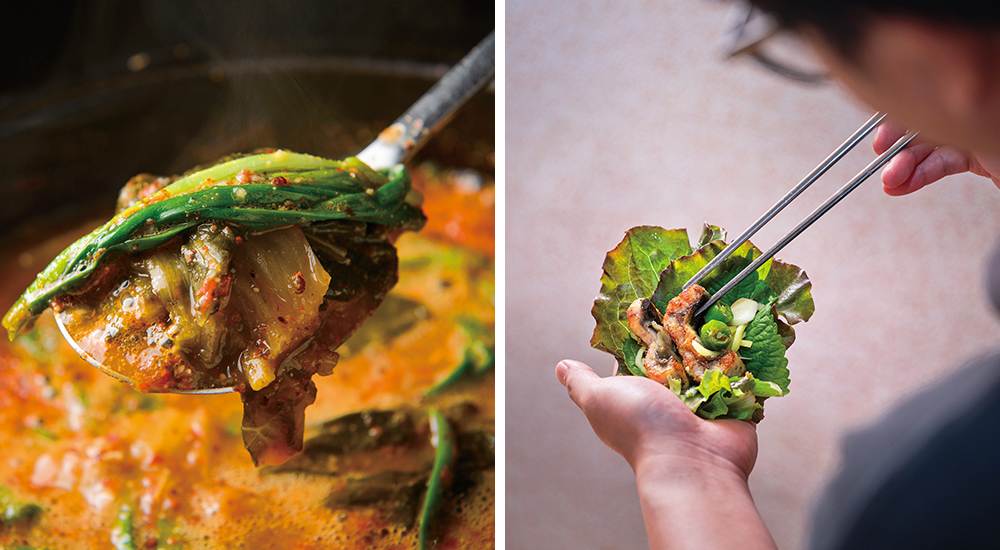
(Left) Suncheon’s jangeotang, which is made by eel and various vegetables together, is also beloved as a restorative meal for replenishing energy.
(Right) When jangeogui, ginger slices, garlic, ssamjang (red chili and soybean paste) and other ingredients are wrapped in lettuce and perilla leaves, you can enjoy a harmonious texture.
 View of all
View of all